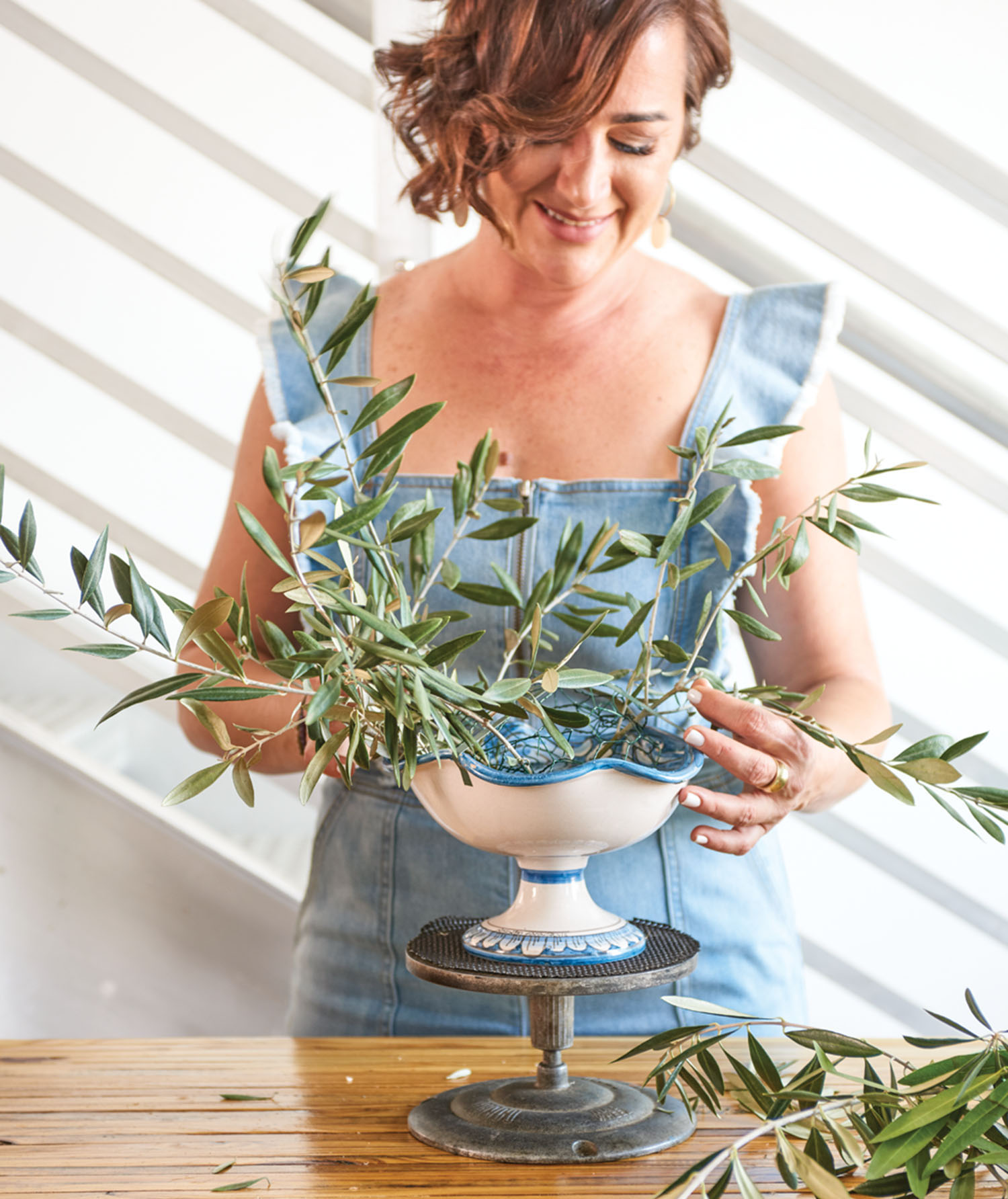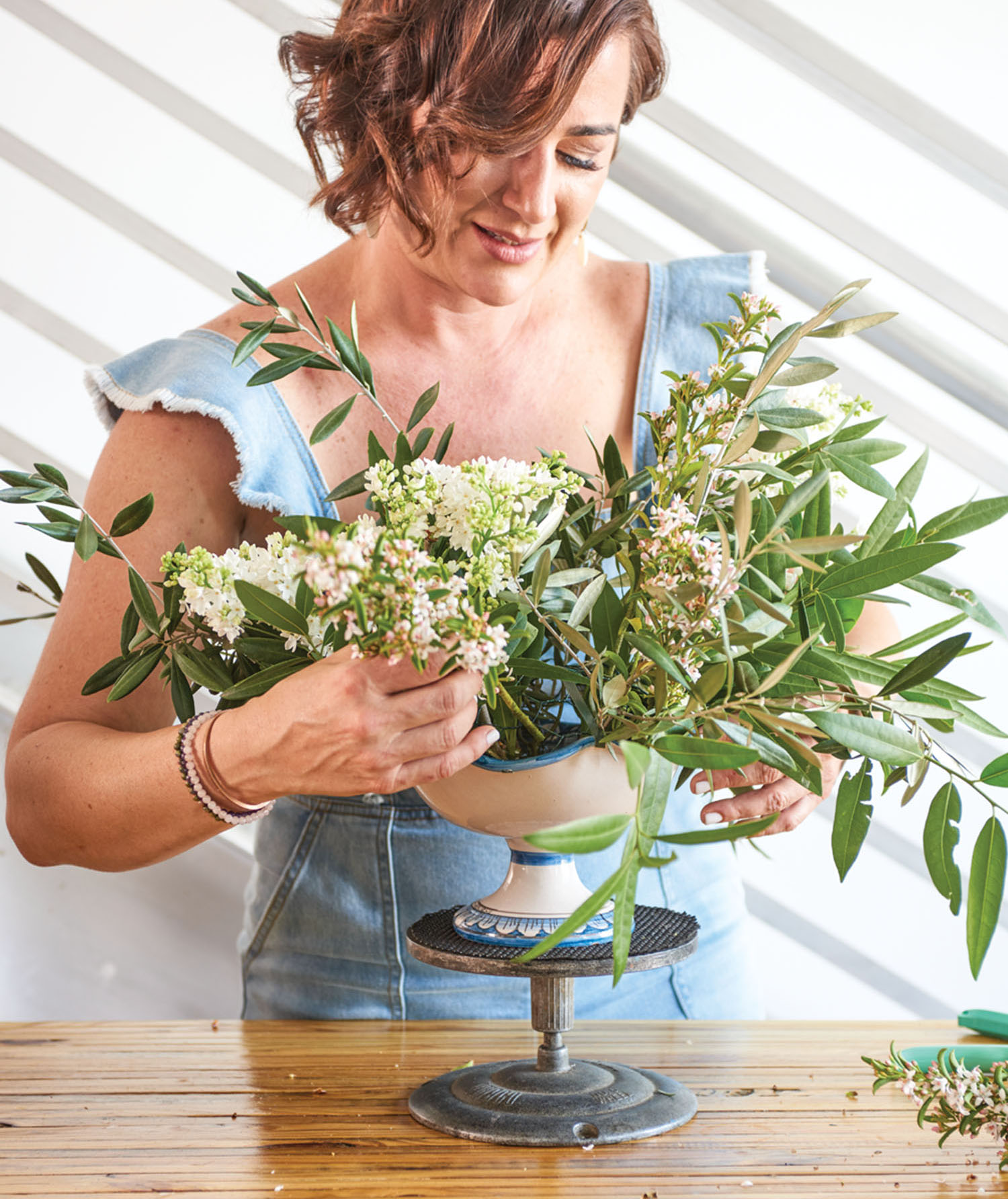
MY INSPIRATION:
I am Venezuelan with Sicilian and Canary Islands DNA, so I am always looking to my roots when creating arrangements. For this one, I also used some fun materials that are native to Florida. I wanted it to be whimsical and playful—very full and laced with a mix of colors.

MATERIALS
-
- Olive branches
- Bay laurel
- Eriostemon branches
- Lilac branches
- Salvia × sylvestris
- Coreopsis leavenworthii
- Foxgloves
- Oregano
- Cosmos

STEP-BY-STEP INSTRUCTIONS






STEP 1
Use a compote-type container to get the best results with this arrangement. I chose a colorful bowl from Caltagirone, Sicily, that is beautiful—even without flowers! I like to use my mother’s ceramics wheel so I can turn the arrangement to check the design at all angles.
STEP 2
Affix a floral frog in the center of the container with floral adhesive, and add a ball of chicken wire, cut to fit. Secure the mechanics with floral tape in an X pattern; then add water.
STEP 3
Form the base of the arrangement using a variety of green materials. I chose olive branches and bay laurel. Cover the entire container, placing pieces at angles and allowing some to droop downward to create movement.
STEP 4
Add the Eriostemon and lilac, cutting a 1- to 2-inch-long slit in the bottom of each branch to allow water to penetrate. Place them throughout. Look for any holes, and fill in as needed.
STEP 5
Time for the foraged florals: Salvia × sylvestris, Coreopsis leaven-worthii, foxgloves, oregano, and cosmos. Other materials will work, but they need to be light enough to “float” in the arrangement. As you add the flowers, cut them at different heights to evoke movement.
STEP 6
I like to add pockets of color with the yellows, pinks, and purples to make sure each hue is very visible in the arrangement. There are no formulas, so you can play around with height and color placement.
By Alice Welsh Doyle | Photography by Monica Buck



